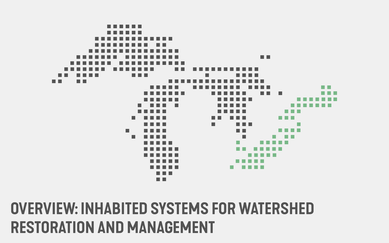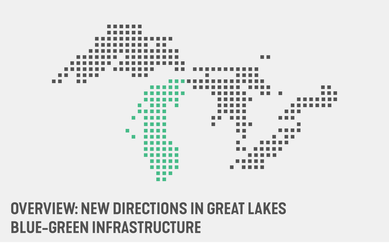Great Lakes Cities Initiative
The Great Lakes watershed represents one of the most significant urbanized regions in the world. With over 22 percent of the world’s fresh surface water supply, its shores, channels, and islands feature 10,000 miles of coastline—more than the contiguous United States' Pacific and Atlantic coastlines combined. The area is home to nearly 60 million people, with a GDP four times that of the Gulf Coast region.
The Great Lakes region is also home to six of SmithGroup’s offices. As awareness of the Great Lakes’ national and global importance grows, so too does our firm’s need to collaborate on impactful planning and design efforts committed to the future of the region’s communities.
Great Lakes cities have a widely shared history of development, industrialization and significant economic transformations. Their downtowns and waterfronts frequently have underutilized properties or decommissioned facilities in need of redevelopment and reuse. The region’s vital water and ecological resources are also threatened by pollution and urban runoff, as well as climate change.
From critical resilience issues impacting the region’s ecological balance, to shifting demand from industrial production and power generation, to the growing need for more sustainable economic and development models, Great Lakes cities are facing some of the most significant decisions in their history. Through our ongoing Great Lakes Cities Initiative, SmithGroup seeks to deepen our role as advocates and partners for our Great Lakes communities. Our goals are to develop and support innovative strategies and solutions, advance new research and ideas, and to share stories of significance and benefit for the future of the Great Lakes region.
SmithGroup's complete compendium of Great Lakes Cities publications is available here:
Great Lakes Cities - Urban Ecology: Inhabited Systems for Watershed Restoration and Management
September 2019
Communities along Lake Erie and the Huron-Erie Corridor have long been grappling with ecological damage and loss. In this publication, SmithGroup explores how our firm, regulatory agencies, and others are working the collaborative planning and design work helping to heal, restore, and protect the Great Lakes ecology and its watershed as an integrated part of the urban fabric.
Great Lakes Cities - New Directions in Blue-Green Infrastructure
October 2020
Unprecedented high-water levels have had destructive impacts across the Great Lakes, including flooding, erosion and damage to shoreline homes, buildings, infrastructure, harbors and parks. In this volume of Great Lakes Cities SmithGroup waterfront experts and coastal engineers explore how these challenges are being addressed through uniquely resilient approaches to blue/green infrastructure development and investment. With a focus on Lake Michigan, these stories and case studies highlight adaptive planning and design strategies that balance short and long-term protection for Great Lakes communities and the watershed. They also advance new approaches and partnerships for shoreline protection, ecological preservation, and community enhancement.


